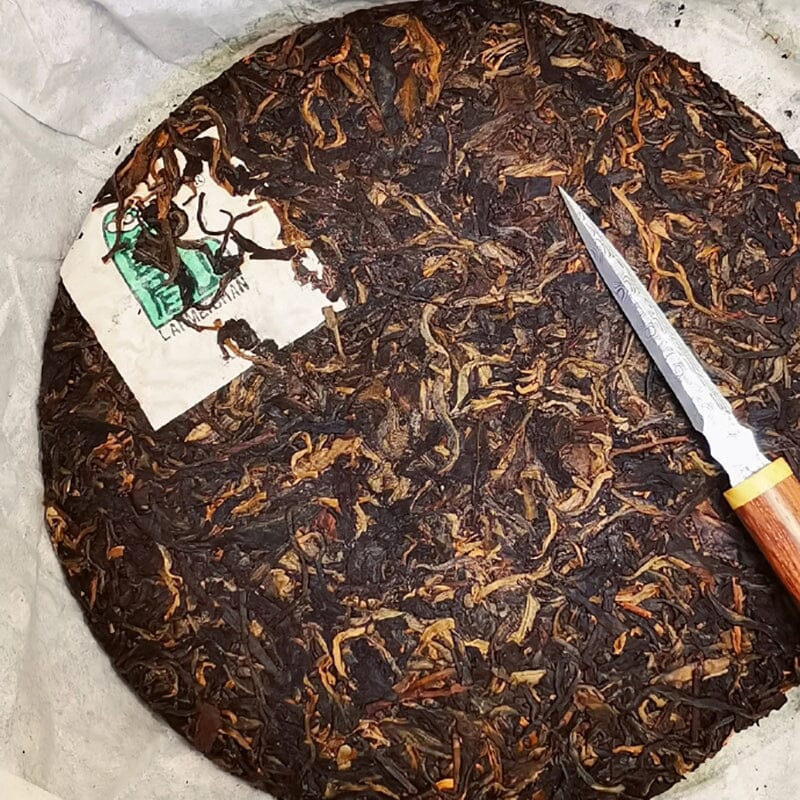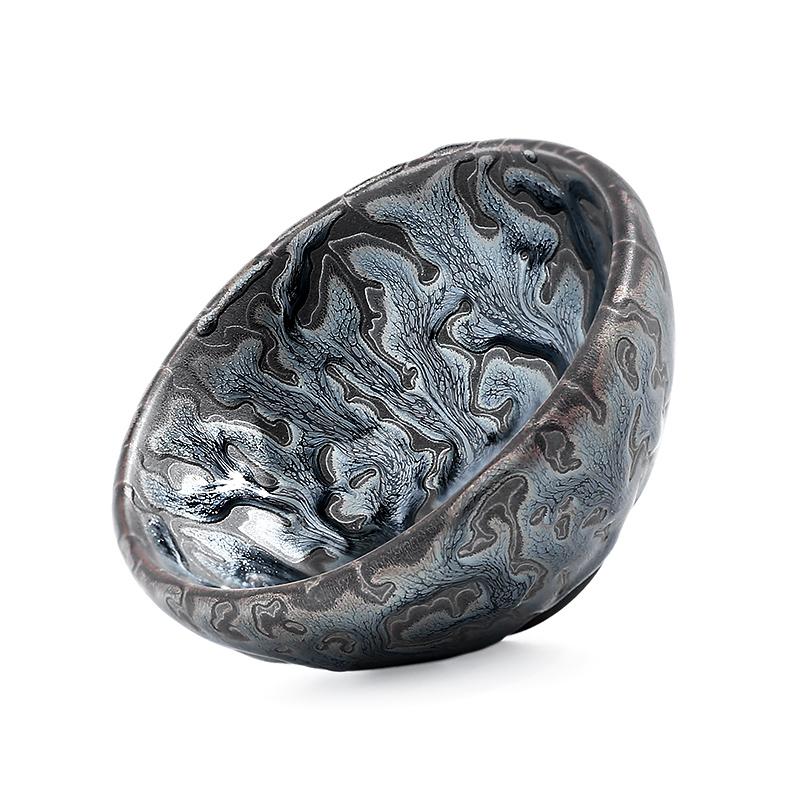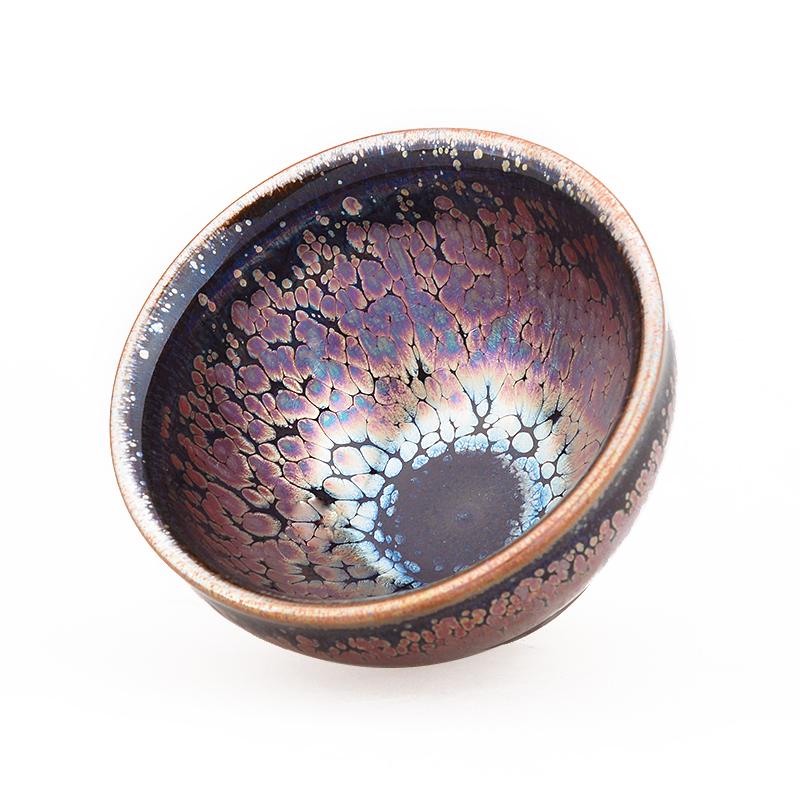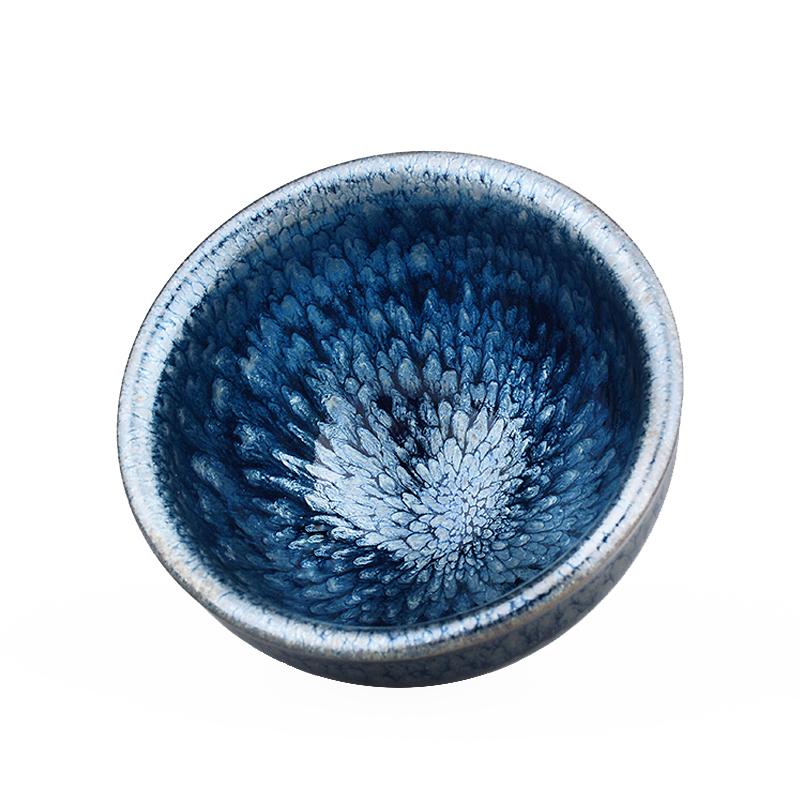2. Key Role of Cotton Paper Packaging in Pu'er Tea Transformation: Flavor Code Endowed by Time
Pu'er tea is a unique type of tea with the characteristic of "improving with age and becoming more fragrant". Its flavor transformation depends on microbial activities and material changes during long-term storage, and cotton paper packaging is the "booster" of this process, providing ideal conditions for transformation, which is the core function of Pu'er tea cotton paper packaging.
(1) Promoting Microbial Activity: Accelerating the Formation of Flavor Substances
The core of Pu'er tea transformation lies in the metabolic role of microorganisms, which need to be in a breathable, light-proof environment with appropriate temperature and humidity to maintain activity. The breathability of cotton paper allows beneficial microorganisms in the air to slowly enter the tea, while the gas produced by internal tea metabolism can be smoothly discharged through cotton paper, forming a virtuous cycle. Studies have shown that under cotton paper packaging, substances such as tea polyphenols and caffeine in Pu'er tea are oxidized and decomposed more evenly, and flavor substances such as amino acids and soluble sugars accumulate more abundantly, making the tea soup gradually change from astringent to mellow, fully proving the positive effect of cotton paper packaging on Pu'er tea transformation.
(2) Maintaining a Stable Transformation Environment: Avoiding External Interference
Cotton paper can form a "buffer barrier" between the tea and the external environment, allowing necessary air and moisture exchange while effectively blocking adverse factors such as dust, insect infestation, and strong light, which is an important function of cotton paper packaging in Pu'er tea storage. For example, the light-proof property of cotton paper can reduce the damage of ultraviolet rays to tea components, preventing excessive oxidation of tea that leads to flavor loss; its natural fiber structure can also block insect infestation to a certain extent, protecting the tea from erosion and providing a stable and safe environment for transformation, embodying the scientific nature of Pu'er tea cotton paper packaging.
(3) Facilitating Uniform Distribution of Flavor: Improving Overall Quality
The transformation rate between the inside and outside of pressed Pu'er tea cakes is prone to differences, and the moderate breathability of cotton paper can make the temperature and humidity inside and outside the tea cake more balanced, reducing the occurrence of "outside ripe and inside raw" or "local mildew", which is a key role of cotton paper packaging in improving Pu'er tea quality. At the same time, cotton paper is closely attached to the surface of the tea cake, allowing the tea to maintain a tight shape during transformation, avoiding uneven transformation caused by looseness, and making the flavor development of the entire cake more coordinated and consistent, further highlighting the significance of cotton paper packaging for Pu'er tea.
3. Cultural Connotation and Practical Value of Cotton Paper Packaging: Perfect Integration of Tradition and Function
The choice of cotton paper packaging for Pu'er tea is not only for practical considerations but also carries profound tea culture connotation, being a perfect combination of traditional wisdom and modern needs, which is also an important reason for the inheritance of Pu'er tea cotton paper packaging.
(1) Millennia-Old Cultural Symbol: Highlighting Tea History Heritage
The history of cotton paper packaging for Pu'er tea can be traced back to the ancient Tea Horse Road period. At that time, horse caravans needed a lightweight, breathable, and easily accessible packaging material for long-distance tea transportation, and cotton paper became the first choice due to its natural excellent properties. This tradition has continued to this day, and cotton paper has become an important symbol of Pu'er tea culture, carrying the historical memory and humanistic feelings of Pu'er tea, embodying the cultural value of Pu'er tea cotton paper packaging. Many tea factories also print information such as tea areas, years, and craftsmanship on cotton paper, or draw traditional patterns and calligraphy works, making cotton paper an important carrier for spreading tea culture.
(2) Lightweight and Easy to Store: Saving Space and Cost
Cotton paper is lightweight, and packaged Pu'er tea has a small volume and light weight, which is convenient for stacking and storage, effectively saving storage space, which is a practical advantage of Pu'er tea cotton paper packaging. Compared with heavy packaging such as wooden boxes and pottery jars, cotton paper packaging is more suitable for large-scale transportation and long-term storage, reducing logistics and storage costs. At the same time, Pu'er tea packaged in cotton paper has good ventilation after unpacking, enabling uniform transformation without frequent turning, simplifying the storage management process, showing the practical value of cotton paper packaging in Pu'er tea circulation.
(3) Convenient for Identification and Recording: Tracing Tea Information
The surface of cotton paper is flat, convenient for writing or printing information such as the origin, year, grade, and manufacturer of the tea, providing convenience for tea identification and quality traceability, which is an additional value of Pu'er tea cotton paper packaging. For collectors, they can record storage time, environment, and other information on cotton paper to form a complete "tea file", which is of great significance for evaluating the aging value and quality changes of Pu'er tea, further reflecting the auxiliary role of cotton paper packaging for Pu'er tea collection.
4. Common Types and Selection Standards of Cotton Paper Packaging for Pu'er Tea: Adapting to Different Needs
There are many types of cotton paper for Pu'er tea on the market, which can be divided into various types according to different materials, craftsmanship, and uses. The selection should be comprehensively considered in combination with tea characteristics and storage needs, and mastering the selection skills of Pu'er tea cotton paper packaging is crucial.
(1) Common Types of Cotton Paper and Their Characteristics
Handmade Cotton Paper: Made by pure hand papermaking, with thicker fibers, excellent breathability, and no chemical additives, it is the first choice for high-end Pu'er tea packaging. Its paper thickness is uneven, with natural textures and a unique texture, but the cost is high and the output is limited, representing high-quality Pu'er tea cotton paper packaging.
Machine-Made Cotton Paper: Produced by machinery, the paper is uniform and flat, with a relatively low price. Its breathability is slightly inferior to handmade cotton paper, but it can meet the packaging needs of mass Pu'er tea and is the mainstream choice in the market, suitable for ordinary Pu'er tea cotton paper packaging.
Special Functional Cotton Paper: Some cotton papers have undergone special treatments, such as adding insect repellents (natural plant extracts) and enhancing moisture resistance, which are suitable for humid areas or long-term storage needs. However, attention should be paid to selecting high-quality products with no odor and no pollution, which is a targeted type of Pu'er tea cotton paper packaging.
(2) Selection Standards for High-Quality Cotton Paper
Check Material: High-quality cotton paper is naturally off-white or light yellow, without dazzling whiteness (avoid choosing bleached paper), with clear visible fibers, and a flexible hand feel that is not easy to tear, which is one of the quality judgment standards for Pu'er tea cotton paper packaging.
Smell Odor: Close smell has no chemical odor or musty smell, only a faint smell of natural fibers, ensuring no pollution to the tea, which is the key to choosing safe Pu'er tea cotton paper packaging.
Test Breathability: Cover the cotton paper on the mouth of a cup containing hot water and observe the diffusion speed of fog on the cup wall. Cotton paper with good breathability has uniform and fast fog diffusion, which is a practical method to evaluate the performance of Pu'er tea cotton paper packaging.
Inspect Printing: Printing patterns or text should use environmentally friendly ink with no odor, avoiding ink penetration into the tea and affecting quality, which is the requirement for printing quality of Pu'er tea cotton paper packaging.
5. Usage and Storage Precautions for Cotton Paper Packaging: Making Protection More Effective
Correct use and maintenance of cotton paper packaging can better play its role in protection and auxiliary transformation, extending the shelf life of Pu'er tea and improving transformation quality, which are the core points of using Pu'er tea cotton paper packaging.
(1) Precautions During Packaging
Close Fit: When packaging pressed tea cakes, the cotton paper should be neatly wrapped around the tea cake, with edges aligned, and gently fixed with cotton thread or tape (choose acid-free tape) to avoid tea wear or moisture due to looseness, which is the basic operation specification for Pu'er tea cotton paper packaging.
Avoid Multi-Layer Wrapping: Some people over-wrap with multiple layers of cotton paper in pursuit of moisture resistance, which will affect breathability. Generally, single or double layers of cotton paper can meet the needs. In humid areas, a layer of breathable bamboo basket or carton can be added outside the cotton paper, which is a usage skill for Pu'er tea cotton paper packaging.
Clear Identification: Use an acid-free pen to record the purchase date, storage environment, and other information in the blank space of the cotton paper for future traceability, but avoid ink penetration polluting the tea, which is a practical recording method for Pu'er tea cotton paper packaging.
(2) Maintenance Skills During Storage
Regular Inspection: Check whether the cotton paper is damp, damaged, or contaminated with odors every 3-6 months. If the cotton paper is found to be damp, it should be replaced in time; if it is damaged, it needs to be repaired or re-wrapped to ensure the protection effect, which are maintenance points for storing Pu'er tea cotton paper packaging.
Avoid Frequent Turning: Pu'er tea packaged in cotton paper should avoid frequent opening or touching to reduce oil and sweat from hands polluting the cotton paper and tea, affecting transformation, which is a precaution for storing Pu'er tea cotton paper packaging.
Adapt to Storage Environment: Pu'er tea packaged in cotton paper is suitable for storage in a ventilated, light-proof environment with a temperature of 15-25℃ and humidity of 50%-70%. It can be placed in a purple clay jar, ceramic jar, or carton to create a more stable microenvironment for the cotton paper, which is the matching requirement between Pu'er tea cotton paper packaging and storage environment.
Transportation Protection: When transporting Pu'er tea packaged in cotton paper, add foam pads or carton buffers on the outer layer to avoid tea cake breakage and cotton paper damage due to extrusion, which are protective measures for transporting Pu'er tea cotton paper packaging.
6. Common Misunderstandings: Correcting Cognitions About Cotton Paper Packaging
(1) Misunderstanding 1: Thicker Cotton Paper Has Better Moisture Resistance
Many people think that thicker cotton paper has stronger moisture resistance and is more suitable for storing Pu'er tea. In fact, excessively thick cotton paper will reduce breathability, hinder the normal breathing of tea, and be counterproductive to transformation. When choosing cotton paper, priority should be given to breathability and purity rather than thickness. In humid areas, moisture resistance can be enhanced by adding outer packaging such as cartons, which is a correction of common misunderstandings in selecting Pu'er tea cotton paper packaging.
(2) Misunderstanding 2: Cotton Paper Packaging Can Completely Replace Other Storage Containers
Cotton paper packaging is the basic protection for Pu'er tea but cannot completely replace professional storage containers. For long-term storage, tea cakes packaged in cotton paper need to be placed in containers such as purple clay jars and cartons to provide a more stable temperature and humidity environment, avoiding the cotton paper being directly exposed to the air and affected by environmental fluctuations, which is a correct cognition of the function of Pu'er tea cotton paper packaging.
(3) Misunderstanding 3: Using Bleached Cotton Paper is More Hygienic
Although bleached cotton paper has a white appearance, chemical substances added during production may remain and pollute the tea, affecting flavor and health. Natural unbleached cotton paper should be chosen. Although its yellowish color is not bright, it can better ensure the purity of the tea, which is an important reminder for material selection of Pu'er tea cotton paper packaging.

The choice of cotton paper packaging for Pu'er tea is the result of the combined effects of material properties, transformation needs, and cultural heritage. The breathability, moisture resistance, and purity of cotton paper provide ideal conditions for the long-term storage and flavor transformation of Pu'er tea. At the same time, its lightweight, environmentally friendly, and cultural carrying characteristics make it the "best partner" of Pu'er tea. Understanding the scientific principles and usage skills of cotton paper packaging can not only help us better preserve Pu'er tea but also deeply understand the unique charm of Pu'er tea "coexisting with time", witnessing the birth of a good cup of tea in the passage of years.












Compartir:
Sitting Posture in Tea Ceremony Etiquette
How to brew Baihao Yinzhen